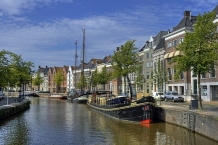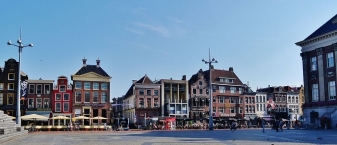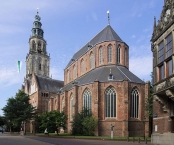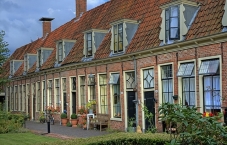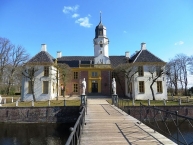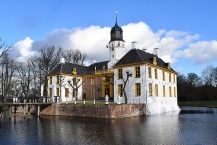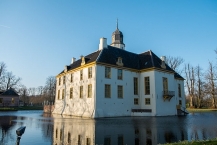Holland-Heide-Cycle Route
Actions
![]()
Please wait - map data are loading
Added on 18 Dec 2017,
last edited by biroto-Redaktion on 02 Dec 2020
Actions
Cycle route metrics
Total distance in km
410
Information about rights to the gps-track data | |
|---|---|
Rights owner | OpenStreetMap and Contributors + biroto-Redaktion (biroto.eu) |
Rights characteristic / license | Contains information from OpenStreetMap, which is made available here under the Open Database License(ODbL) |
Link to the description of the license | |
GPX file taken from | |
GPX file uploaded | by biroto-Redaktion on 02 Dec 2020
|
Track points in total
4.736
Track points per km (avg)
12
Start/endpoint
Start location
Groningen, Groningen, NL (5 m NHN)
End location
Lauenburg/Elbe, Schleswig-Holstein, DE (9 m NHN)
Beds4Cyclists, worth visiting and infrastructure
Name and address
Latitude / Longitude
Phone
Fax
Mobile
Type of accommodation
Rating for cyclists
Route km
Dist. to route
Elevation
0 km
2,6 km
4 m
2 km
0,0 km
9 m
Information about copyright | |
|---|---|
Rights owner | |
Rights characteristic / license | by-sa: CREATIVE COMMONS Attribution-ShareAlike |
Link to the description of the license | |
Image taken over from | https://commons.wikimedia.org/wiki/File:Groningen_-_Hoge_der_A_-_vanaf_de_A-brug_-_Bert_Kaufmann.jpg |
Image has been uploaded | by biroto-Redaktion on 18 Dec 2017
|
Information about copyright | |
|---|---|
Rights owner | |
Rights characteristic / license | by-sa: CREATIVE COMMONS Attribution-ShareAlike |
Link to the description of the license | |
Image taken over from | https://commons.wikimedia.org/wiki/File:Groningen_Grote_Markt_1.jpg |
Image has been uploaded | by biroto-Redaktion on 18 Dec 2017
|
Information about copyright | |
|---|---|
Rights owner | |
Rights characteristic / license | by-sa: CREATIVE COMMONS Attribution-ShareAlike |
Link to the description of the license | |
Image taken over from | https://commons.wikimedia.org/wiki/File:Martinikerk,_Groningen_1144.jpg |
Image has been uploaded | by biroto-Redaktion on 18 Dec 2017
|
Information about copyright | |
|---|---|
Rights owner | |
Rights characteristic / license | by-sa: CREATIVE COMMONS Attribution-ShareAlike |
Link to the description of the license | |
Image taken over from | https://commons.wikimedia.org/wiki/File:Pepergasthuis_-_huisjes.jpg |
Image has been uploaded | by biroto-Redaktion on 18 Dec 2017
|
Groningen is a lively student city in the Northern Netherlands. It is the capital of a province with the same name and home to about 198,000 inhabitants, making it the largest city in the north. A university town with some 50,000 students gives the city its famous vibe; a pleasant youthful atmosphere, some fine historic heritage and with plenty of things to do.
For the purposes of this guide, Groningen includes the nearby municipality of Haren.
Understand
Archaeologists have found traces of habitation from the Neolithic and the later Iron Age. The city appeared in writing in the year 1040 as "Villa Cruoninga", apparently already a place of some significance. The city has a rich history, which can be seen clearly from the Medieval buildings in the downtown area.
In the 13th century, when the city was an important trade centre, its inhabitants built a city wall to underline its authority. The city had a strong influence on the surrounding lands and made its dialect a common tongue. The most influential period of the city was the end of the 15th century, when the nearby province of Friesland was administered from Groningen. During those years, the Martini Tower was built, which loomed over the city at (then) 127 m tall, making it the highest building in Europe at the time. The city's independence came to an end when it chose to join forces with the Spanish during the Eighty Years' War in 1594. It was later reconquered, and joined the Republic of the Seven United Netherlands.
In 1614, the University of Groningen was founded for religious education. In the same period the city expanded rapidly and a new city wall was built. That city wall was tested during the Third Anglo-Dutch War in 1672, when the city was attacked fiercely by the Bishop of Münster, Bernhard von Galen. The city walls resisted, an event which is celebrated with music and fireworks on 28 August (as "Groningens Ontzet" or "Bommen Berend").
The city did not escape the devastation of World War II. In particular, the main square, Grote Markt, was largely destroyed in April 1945, during the Battle of Groningen, which lasted several days. However, the Martinitoren, its church, the Goudkantoor, and the city hall were not substantially damaged.
Nowadays the city of Groningen is nationally renowned for the university, the museum and its vibrant atmosphere. 50% of the citizens are below the age of 30, making this the youngest city in the country. For decades, the bicycle has played a central role in the lives of people in the city, and today accounts for no less than 60% of all traffic movement with more bikes than citizens.
See
Downtown Groningen is pleasant and interesting. The city centre providing plenty cultural heritage and a laid-back atmosphere. Together with the excellent Groninger Museum, it forms the main attraction for visitors.
Like many cities in the Netherlands, the centre is surrounded by a canal. Several historic canals have been "gedempt", or filled, however, and turned into streets. This is reflected in their names, and you'll likely find yourself strolling along the Gedempte Zuiderdiep. The heart of the city is formed around the two adjoining market squares, The Grote Markt (or Great Market) and the Vismarkt (or Fish Market). Standing tall on the edge of the Grote Markt is the Martini Tower, a true landmark for Groningen and one of its main attractions.
Architecture
Warfare left hundreds of buildings in ruins in 1945, but a good number of monuments remain. Strolling through the city centre you'll encounter former canal warehouses, the city hall, several churches, the former Gold Office and many other historic buildings. The city has, with success, attempted to find a balance between modern architecture and historic grandeur. The latest initiative is a major renewal of the eastern side of the Grote Markt.
Museums
As in many cities in Europe, Groningen's museums are generally closed on Mondays.
- ⊙Groninger Museum, Museumeiland 1, ☎ +31 50 3666555. Tu-Su 10:00-17:00. Opposite train/bus station. Spectacular architecture. Hosts state-of-the-art contemporary art in the world. Named one of the five most progressive modern/contemporary art collections in the world, this museum's changing exhibitions regularly attract visitors from all over the country. Adult €13, students €10, children and Dutch Museum Pass holders free.
(updated Jul 2017)
- ⊙Noordelijk Scheepvaartmuseum (Northern Maritime Museum), Brugstraat 24, ☎ +31 50 3122202. Tu-Sa 10:00-17:00, Su 13:00-17:00. The northern museum of water transport. Shows the history and role of transport over water until the 1970s. The museum is situated in the oldest residential building remaining in the city. Not accessible with a wheelchair or rollator. Adults €6, senior citizens €3.50, children up to 7 free, children aged 7-15 €3.50, Museumcard (Museumjaarkaart) free.
(updated Jul 2017)
- ⊙Universiteitsmuseum (University Museum), Oude Kijk in 't Jatstraat 7A, ☎ +31 50 3635798. Tu-Su 13:00-17:00. A strange and wonderful little museum located just off Oude Kijk in 't Jatstraat. Temporary exhibitions, often of a technological bent, are held on the first floor; upstairs (past an elaborate stained-glass window in the stairwell) is an eclectic collection in the Victorian style, with everything from anatomical specimens and taxidermied animals to early scientific instruments. free. (updated Jul 2017)
- ⊙Het Nederlands Stripmuseum, Westerhaven 71, ☎ +31 50 3178470. Tu-F 12:30-17:00, Sa Su 10:00-17:00. The Dutch cartoon museum (strip = cartoon) shows many cartoons made by Dutch cartoonists. It's also suitable to visit with children (not least because there's a McDonald's next-door with a play area), but also because they can learn how to draw cartoons by themselves. Adult €8.95, children aged 3-11 €7.50, children 2 and under free, students €5, Museumkaart free, seniors 60 and over €7.50.
(updated Jul 2017)
- ⊙GRID Grafisch Museum Groningen (GR-ID, museum for realising GRaphic IDeas), Sint Jansstraat 2. Tu-Su 13:00-17:00. GR-ID is a museum about graphical industry, art and design. The museum collection is mainly drawn from the province of Groningen and has been put together over a course of several decades. €5. (updated Aug 2016)
Historic heritage
Most of the historic heritage can be found within the ring of canals. The most visited tourist attraction is without doubt the Martini Tower, but there is much more to see in Groningen: old canal warehouses, guesthouses, typical Dutch gables and beautiful gardens. Probably the most characteristic streets of the city are the ⊙Hoge and Lage der A streets. These two streets run along the A canal and are known for the dozens of national heritage sites, in particular the outstanding warehouses from the Middle Ages and a 17th century brewery named 'Batavia'.
Scattered trough the city centre are several late-medieval Guest Houses (Gasthuizen). During daylight hours these picturesque courtyards can be visited for free. The houses are not open to the public: the people living in them enjoy their quiet and privacy. Access is through gated doorways that will be unlocked during daylight hours and locked during the evening/night. The largest and oldest one is the courtyard of the ⊙Pelstergasthuis, located in the Pelsterstraat, next to the Pelstergasthuis church. The Guest House consists of several courtyards connected through archways. In the Peperstraat, near the end on the left when viewed from the Poelestraat, is the ⊙Pepergasthuis. The Peper Guest House was founded in 1405. Part of the medieval city wall is still visible from the courtyard. At the tourist information is a city walk available through many courtyards.
Other important heritage listings are:
- ⊙Der Aa-Kerk, Akerkhof. This beautiful medieval church with its remarkable yellow-painted tower stands tall above the neighbouring Korenbeurs. Established between 1425 and 1492, the church's tower was repeatedly destroyed and replaced, with the current one originating in 1711. The building is no longer used for religious services but is open for visitors and regularly houses expositions.
- ⊙Academiegebouw (University of Groningen), Broerstraat 5. The Rijksuniversiteit Groningen, the University of Groningen, is the second-oldest university in the Netherlands and one of three State Universities of the Netherlands. It was established in 1614. While the university has its share of modern buildings in town and out, the Academiegebouw is an old and attractive building with a tower and worth strolling past. Although it is not intended, the building is accessible for the public. The interior of the building is magnificent, especially the stained glass, the entrance hall and the murals in the Aula and Senaatskamer (Senate room).
- ⊙Gold Office (Goudkantoor), Waagplein 1 (More or less between the two market squares). This beautifully decorated building on the edge of the Grote Markt is hard to miss. It was built in 1635 as the office for the city receiver. The words Date Caesari quae sunt Caesaris, Latin for "render unto Caesar that which is Caesar's", still remind of this early function of the building. Later, between 1814 and 1887, it served as a gold office in the sense that this was the place where gold and silver works were authenticated and marked as real. Today, it's a café.
- ⊙Martinikerkhof (Martini cemetery). The Martinikerkhof used to be a cemetery, but since 1828 it is no longer in use. The cemetery has been transformed into a beautiful square, an oasis of peace. Prominent on the Martinikerkhof is the Martini Church. On the east side of the square stands the 'Provinciehuis', the seat of the provincial government. The front of this beautiful building was built in the end of the 20th century, while the rear of the building dates back to the Middle Ages. At that time the building was used as a Latin School. The north side of the square is marked by nice old houses and the Prinsenhof. At the square stands the Saint George and the Dragon Memorial (Sint Joris en de Draak Monument), the official provincial Second World War memorial. The memorial has been made in remembrance of the whole loss and suffering in the city of Groningen.
- ⊙Martini Tower and Church (Martinitoren), Grote Markt. 12:00-16:00 (11:00-17:00 in summer). One of the most important hotspots in Groningen refers to Saint Martin of Tours, the patron saint of the Bishopric of Utrecht. Locals call the tower d' Olle Grieze which means 'the old grey one' and is related to its colour. Tickets are available in the VVV (tourist information) shop just over the road. There is a wide view over the city from the top of the tower. It was built as a cruciform church in the 13th century, and was extended in the 15th and 16th centuries. Much of the wall and roof paintwork has been preserved. Of particular note is a 16th-century depiction of the life of Jesus Christ. €3.
- ⊙Prinsenhof & Prinsentuin, Martinikerkhof 23, entrance of the public gardens at the corner of Turfsingel and Kattenhage. Just a short walk from the Grote Markt, the lovely Renaissanse gardens of the Prinsenhof can be a remarkably peaceful place to relax for a little while. It has a rose garden a herb garden and The Prinsenhof building originates in the 15th century and was originally a wealthy mansion for the city's bishop or "stadtholder", and later was used as a military hospital. Now, a restaurant has been opened within the building. The renaissance style gardens are open for public. This garden consists of a rose garden, a herb garden and a part with berceaus. The entrance of the garden is remarkable because of a beautiful sundial on the wall above it. When the weather is nice, volunteers run a small tea house there.
- ⊙Sint Jozef Cathedral, Radesingel 4. St Joseph's Cathedral is the cathedral church of the diocese of Groningen-Leeuwarden. The Neo-Gothic church was built from 1885 to 1887 and consecrated on May 25, 1887. Local nickname for the tower is "drunk's tower", because there is from every direction always two clocks to be seen.
- ⊙Synagogue. The synagogue was built after the oriental design of the New Synagogue in Berlin and has a beautiful moorish style interior. Shortly after World War II the Jewish community was forced to sell the synagogue since only 7% of the Jewish community of Groningen survived the war. In 1981 the building was renovated and rehabilitated.
Buy
Markets
Both main squares are filled with market stalls during the week markets on Tuesday, Friday and Saturday. You'll find food, street food, fashion and other stalls on the markets. Vis Markt square is named after the fish that were sold on the spot during the centuries and still you can find many fish selling stalls today. Try the typical Dutch fish street food like kibbeling, haring and lekkerbekjes.
Local product and market for foodies Ommelander Markt settles on Harmonieplein square every second Saturday of the month. Local food producers sell their ware at the market such as cheese, meat, honey, fruit and vegetables.
Eat
Local specialties
A typical 'Groninger' specialty is Groninger worst, a sausage made from raw minced pork which is then air dried. You can buy this sausage in every supermarket and butchery. When visiting a snackbar, you should try a eierbal. The eierbal is a ball-shaped croquette, filled with veal and a whole egg. The eierbal is seen as the Groninger variant of the Dutch croquette.
The Netherlands is known for its cheese. Groningen has some typical Dutch cheese stores:
- ⊙Kaashandel van der Ley, Oosterstraat 61. Tu-F 09:00-18:00, Sa 09:00-17:00. Van der Ley is one of the best cheese stores in the world. Look for local organic varieties, such as green pesto cheese or farmers crumblecheese (boerenbrokkelkaas).
- ⊙Groninger Kaasboetiek, Astraat 5. M 13:00-18:00, Tu-Sa 09:30-18:00.
Information about copyright | |
|---|---|
Rights characteristic / license | by-sa: CREATIVE COMMONS Attribution-ShareAlike |
Link to the description of the license | |
Input taken over from: |
Wikivoyage contributors, 'Groningen', Wikivoyage, The FREE worldwide travel guide that anyone can edit, 18 November 2017, 21:55 UTC, <https://en.wikivoyage.org/w/index.php?title=Groningen&oldid=3331109> [accessed 18 December 2017] |
taken over / edited on | 18 Dec 2017 - 12 Apr 2018
|
taken over / edited by |
|
2 km
0,0 km
4 m
3 km
0,1 km
1 m
29 km
0,2 km
2 m
Information about copyright | |
|---|---|
Rights owner | |
Rights characteristic / license | by-sa: CREATIVE COMMONS Attribution-ShareAlike |
Link to the description of the license | |
Image taken over from | https://commons.wikimedia.org/wiki/File:Fraeylemaborg_-_Slochteren_21.JPG |
Image has been uploaded | by biroto-Redaktion on 08 Apr 2021
|
Information about copyright | |
|---|---|
Rights owner | https://commons.wikimedia.org/w/index.php?title=User:RomkeHoekstra |
Rights characteristic / license | by-sa: CREATIVE COMMONS Attribution-ShareAlike |
Link to the description of the license | |
Image taken over from | |
Image has been uploaded | by biroto-Redaktion on 08 Apr 2021
|
Information about copyright | |
|---|---|
Rights owner | |
Rights characteristic / license | by-sa: CREATIVE COMMONS Attribution-ShareAlike |
Link to the description of the license | |
Image taken over from | https://commons.wikimedia.org/wiki/File:Fraeylemaborg_-_achterzijde.jpg |
Image has been uploaded | by biroto-Redaktion on 08 Apr 2021
|
The Fraeylemaborg (Dutch pronunciation: [ˈfraːiləmaːˌbɔrx]) is a borg in the village of Slochteren in the Netherlands. At present the Fraeylemaborg is a historic house museum.
Building history
Fraeylemaborg is the most important of the borgen in the province of Groningen. These strong houses or keeps were built in the Middle Ages to store harvests and to protect their produce from robbers. Besides churches, these structures were the only buildings that used durable stone and masonry. In due time they grew to become centres of power and wealth. The Fraeylemaborg is located in the middle of the town of Slochteren which upon its discovery in 1959 gave its name to the largest gasfield in the world.
In 1475 there was already a farm with the name Frealemaheerd. In the archives of 1504 the name is found of one Remmer Fraeylema. The building originates from the 16th century. The left wing was built in the 17th century. In 1680 the borg was sold by Evert Rengers, son of the former lord of the manor, because of his family debts. It was bought by Henric Piccardt (married to Anna Elizabeth Rengers, Evert's sister), who borrowed the necessary funds from Stadtholder William III. Piccardt extensively rebuilt the borg and he also landscaped a huge formal garden in the style of Louis XIV's France. After Piccardt's death the borg fell into disrepair. In 1781 the Fraeylemaborg was sold to Hendrik de Sandra Veldman. He rebuilt it into the shape it has today. Among his innovations was the removal of two towers which had graced the front square.
Information about copyright | |
|---|---|
Rights characteristic / license | by-sa: CREATIVE COMMONS Attribution-ShareAlike |
Link to the description of the license | |
Input taken over from: |
Wikipedia contributors, 'Fraeylemaborg', Wikipedia, The Free Encyclopedia, 4 December 2020, 15:23 UTC, https://en.wikipedia.org/w/index.php?title=Fraeylemaborg&oldid=992296208 |
taken over / edited on | 08 Apr 2021
|
taken over / edited by |
|
![]()

